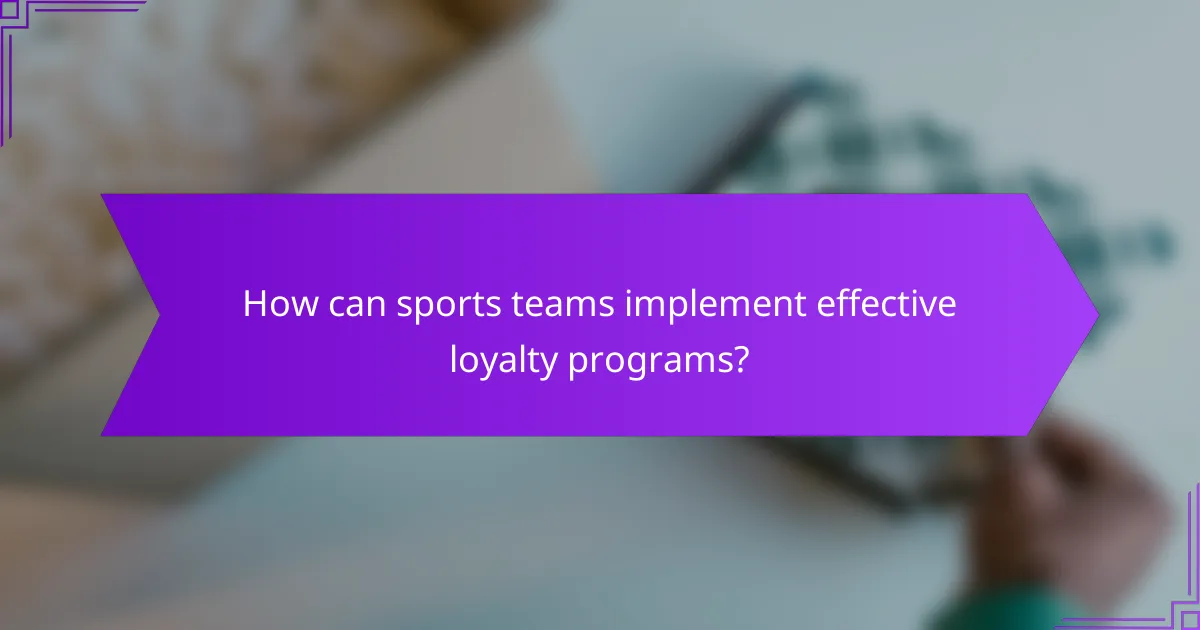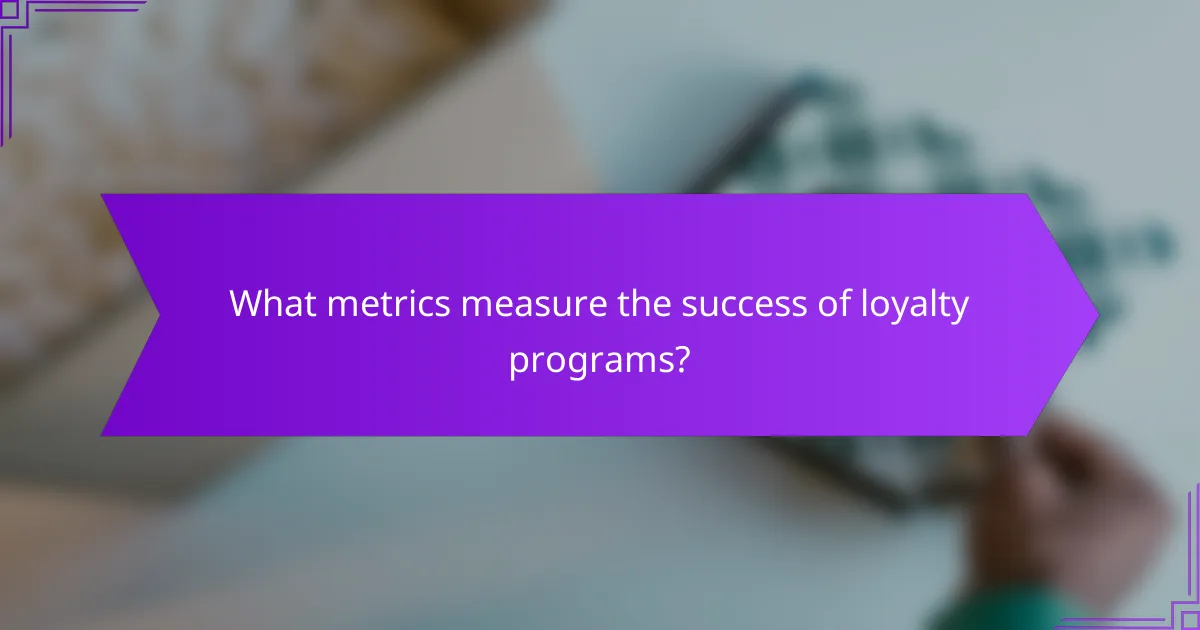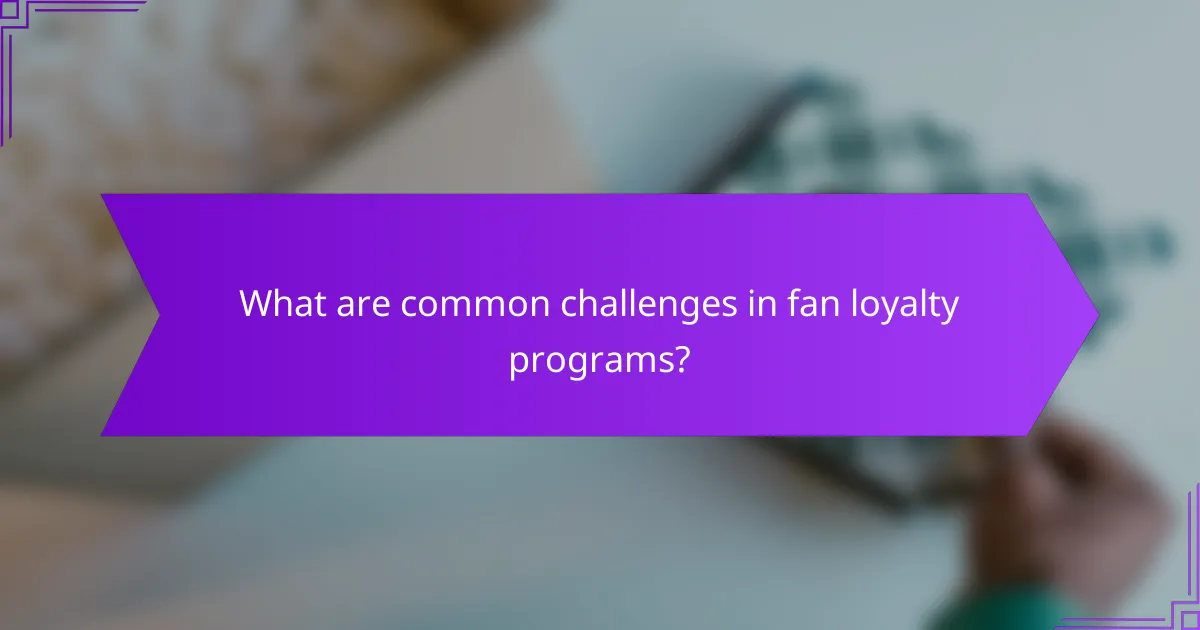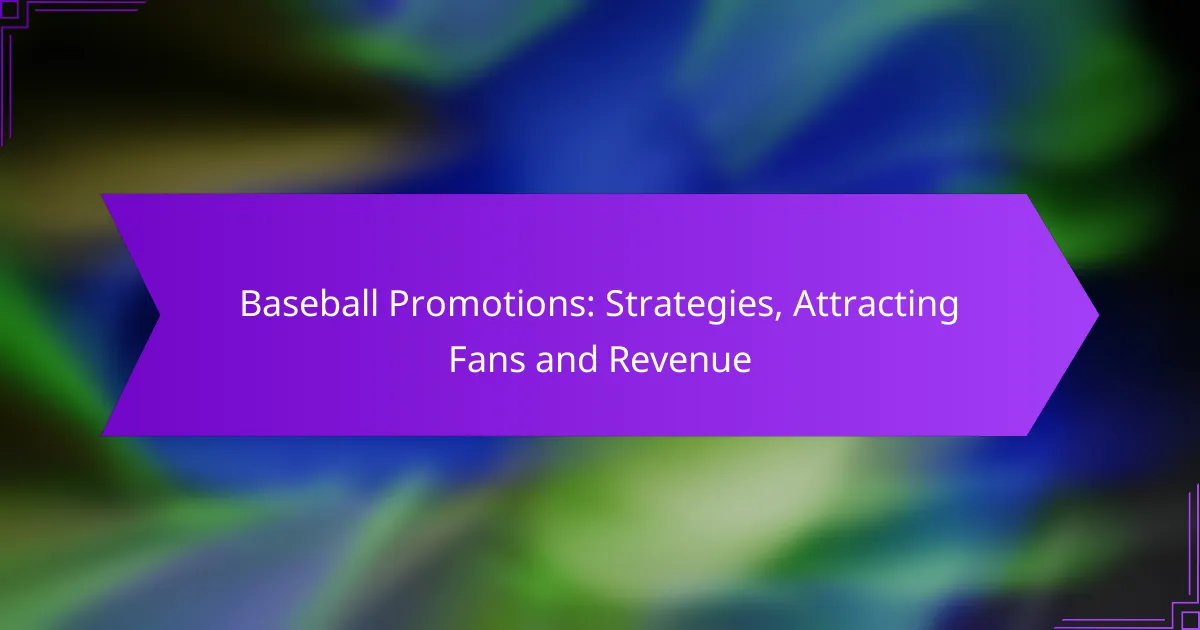Fan loyalty programs play a crucial role in enhancing engagement and retention by fostering a deeper connection between fans and their favorite teams or brands. By providing structured interactions and personalized rewards, these programs not only boost customer loyalty but also drive increased revenue and participation in events and promotions.

How do fan loyalty programs enhance engagement?
Fan loyalty programs enhance engagement by creating a structured way for fans to interact with their favorite teams or brands. These programs foster a sense of community and belonging, encouraging fans to participate more actively in events and promotions.
Increased fan interaction
Increased fan interaction is a primary benefit of loyalty programs, as they often include activities that encourage participation. Fans can earn points through social media engagement, attending games, or purchasing merchandise, which motivates them to stay connected.
For example, a sports team might offer points for sharing posts or checking in at games, leading to higher visibility and interaction on various platforms. This not only boosts fan engagement but also enhances the team’s online presence.
Exclusive rewards and experiences
Exclusive rewards and experiences are key components of fan loyalty programs, providing incentives that resonate with dedicated supporters. These can include access to limited-edition merchandise, meet-and-greet opportunities with players, or special events only available to loyalty members.
For instance, a team might offer VIP tickets or behind-the-scenes tours as rewards, creating memorable experiences that deepen fans’ emotional connections. Such exclusivity can significantly enhance fan loyalty and retention.
Personalized communication
Personalized communication is essential in fan loyalty programs, allowing teams to tailor messages and offers based on individual fan preferences. By analyzing data from fan interactions, organizations can send targeted promotions and updates that resonate with specific segments of their audience.
For example, a team could send birthday discounts or personalized content related to a fan’s favorite player. This approach not only makes fans feel valued but also encourages ongoing engagement and participation in the loyalty program.

What are the key benefits of fan loyalty programs?
Fan loyalty programs offer significant advantages, including enhanced customer retention, increased revenue, and deeper brand loyalty. These programs incentivize fans to engage more frequently, ultimately benefiting both the fans and the organizations they support.
Improved customer retention
Fan loyalty programs are designed to keep customers coming back. By offering rewards for repeat purchases or engagement, organizations can significantly reduce churn rates. For example, a sports team might provide exclusive merchandise or discounts on tickets to loyal fans, encouraging them to remain engaged over time.
To maximize retention, consider personalizing rewards based on fan preferences. Tailoring offers to individual interests can create a stronger emotional connection, making fans feel valued and appreciated.
Higher revenue generation
Implementing a fan loyalty program can lead to increased revenue streams. By encouraging repeat purchases and higher spending through rewards, organizations can see a notable boost in sales. For instance, a concert venue might offer points for every ticket purchased, which can be redeemed for future events, driving more ticket sales.
Additionally, loyalty programs can attract sponsorship opportunities. Brands often seek partnerships with organizations that have engaged fan bases, providing potential financial benefits and enhancing overall revenue.
Stronger brand loyalty
Fan loyalty programs foster a sense of community and belonging among supporters, strengthening brand loyalty. When fans feel recognized and rewarded, they are more likely to advocate for the brand and share their positive experiences with others. This word-of-mouth marketing can be invaluable for growth.
To build stronger loyalty, regularly communicate with fans through newsletters or social media updates about their rewards and program benefits. Keeping fans informed helps maintain their interest and engagement, ensuring they remain committed to the brand over time.

How can sports teams implement effective loyalty programs?
Sports teams can implement effective loyalty programs by focusing on engaging fans through personalized experiences and rewards. Key strategies include leveraging technology, integrating social media, and offering tiered rewards to enhance fan participation and retention.
Utilizing mobile apps
Mobile apps are essential tools for sports teams to create loyalty programs that engage fans directly. By offering features like ticket purchasing, event notifications, and exclusive content, teams can keep fans connected and informed. Additionally, in-app rewards for attendance or purchases can incentivize ongoing engagement.
For example, a team could implement a point system where fans earn points for attending games, which can later be redeemed for merchandise or discounts. This not only drives attendance but also fosters a sense of community among fans.
Integrating social media platforms
Social media platforms are powerful channels for sports teams to enhance their loyalty programs. By creating campaigns that encourage fans to share their experiences, teams can increase visibility and foster a sense of belonging. Engaging content, such as contests or interactive polls, can also drive participation.
Teams should consider offering rewards for social media engagement, such as exclusive access to events or meet-and-greets with players. This strategy not only boosts loyalty but also expands the team’s reach to potential new fans.
Offering tiered rewards
Tiered rewards systems can motivate fans to increase their engagement with a team. By categorizing rewards into levels, teams can encourage fans to reach higher tiers for better benefits, such as premium seating or exclusive merchandise. This structure creates a sense of achievement and encourages ongoing participation.
For instance, a team might offer basic rewards for casual fans, while dedicated supporters can unlock higher tiers with more valuable rewards. This approach not only enhances fan loyalty but also helps teams identify and nurture their most passionate supporters.

What metrics measure the success of loyalty programs?
Success in loyalty programs can be gauged through several key metrics that indicate customer behavior and program effectiveness. The most significant metrics include customer lifetime value, engagement rates, and redemption rates, each providing insights into how well the program fosters loyalty and retention.
Customer lifetime value
Customer lifetime value (CLV) measures the total revenue a business can expect from a single customer throughout their relationship. This metric helps businesses understand the long-term value of retaining customers through loyalty programs. A higher CLV indicates that the loyalty program is effectively encouraging repeat purchases and enhancing customer loyalty.
To calculate CLV, consider factors such as average purchase value, purchase frequency, and customer lifespan. For example, if a customer spends an average of $100 per purchase, shops four times a year, and remains a customer for five years, their CLV would be $2,000. Businesses should aim to increase CLV by enhancing customer experiences and rewards.
Engagement rates
Engagement rates reflect how actively customers participate in a loyalty program, including their interactions with rewards, promotions, and communications. High engagement rates suggest that customers find the program valuable and are likely to remain loyal. Tracking engagement can help identify which aspects of the program resonate most with customers.
To improve engagement rates, businesses can personalize communications, offer exclusive rewards, and create interactive experiences. For instance, sending tailored offers based on customer preferences can significantly boost participation. Monitoring engagement metrics regularly allows businesses to adapt their strategies and keep customers interested.
Redemption rates
Redemption rates indicate the percentage of rewards that customers actually use compared to those earned. A high redemption rate suggests that the rewards are appealing and attainable, which can enhance customer satisfaction and loyalty. Conversely, low redemption rates may signal that rewards are not valuable or that customers are unaware of how to redeem them.
To improve redemption rates, businesses should ensure that rewards are easy to understand and redeem. Offering a variety of rewards that cater to different customer preferences can also help. For example, if a loyalty program includes points that can be redeemed for discounts, exclusive products, or experiences, customers are more likely to engage and redeem their rewards. Regularly reviewing and adjusting the reward structure can lead to better outcomes.

What are common challenges in fan loyalty programs?
Common challenges in fan loyalty programs include data privacy concerns, maintaining long-term engagement, and balancing the costs of rewards with their perceived value. Addressing these issues is crucial for the success and sustainability of any loyalty initiative.
Data privacy concerns
Data privacy is a significant challenge for fan loyalty programs, as they often require collecting personal information from participants. Organizations must comply with regulations such as GDPR in Europe or CCPA in California, which mandate clear consent and data protection measures.
To mitigate privacy concerns, companies should implement transparent data practices, informing fans about how their information will be used. Regular audits and updates to privacy policies can help build trust and ensure compliance.
Maintaining engagement over time
Keeping fans engaged in a loyalty program can be difficult, especially as initial excitement wanes. Programs should offer fresh and relevant rewards to maintain interest, such as exclusive events, merchandise, or experiences that resonate with fans.
Regular communication through newsletters or social media can also help sustain engagement. Personalized messages and targeted offers based on fan behavior can enhance the connection and encourage continued participation.
Balancing rewards with costs
Finding the right balance between attractive rewards and program costs is essential for sustainability. Programs should analyze the cost-effectiveness of rewards to ensure they do not exceed the value they bring in terms of customer loyalty and retention.
Offering tiered rewards can be an effective strategy. For example, providing basic rewards for entry-level engagement while offering premium rewards for higher levels of participation can motivate fans without overwhelming the budget.



